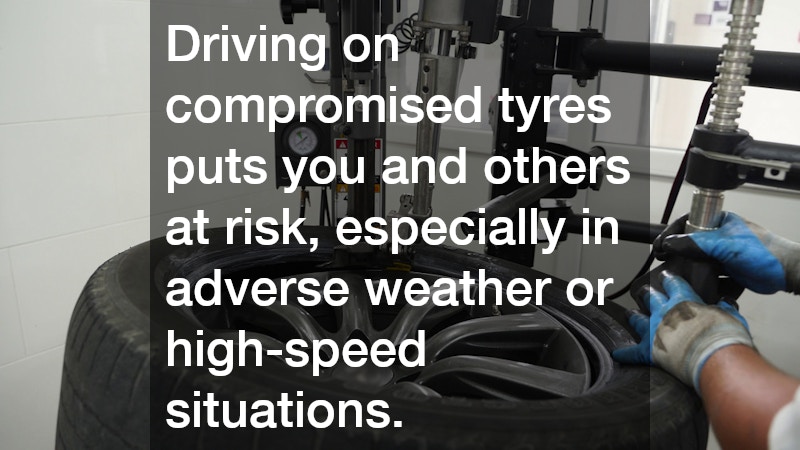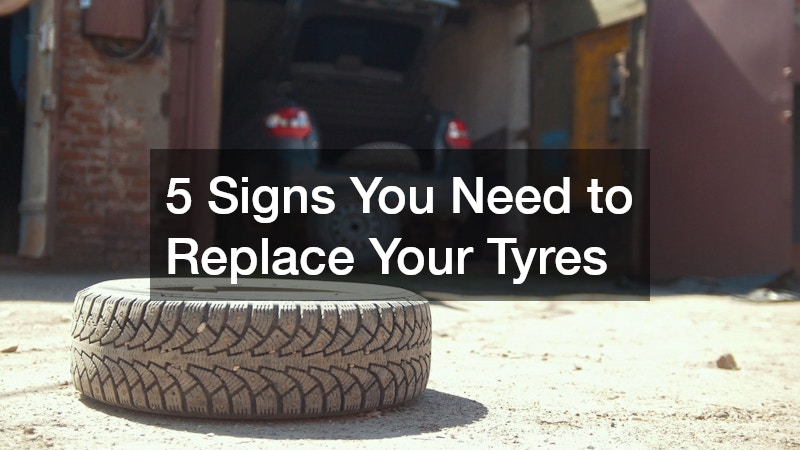Your vehicle’s tyres are more than just rubber meeting the road. They are critical components for safety, handling, fuel efficiency and overall driving performance.
While regular tyre maintenance can extend their lifespan, no tyre lasts forever. Knowing when to replace your tyres is vital for avoiding breakdowns, accidents and costly repairs. Being proactive can save lives and money in the long run. Neglecting worn or damaged tyres can lead to poor braking, hydroplaning, or even a dangerous blowout at high speeds. Fortunately, identifying when tyres need replacing is straightforward if you know what to look for. In this article, we’ll explore five clear signs that indicate it’s time to consider new tyres.
Worn Tread Depth
The most obvious and telling sign that your tyres need replacing is low tread depth. Tyre treads are designed to provide traction, especially in wet or slippery conditions. Over time, the tread wears down, making it harder for your vehicle to grip the road. In Australia, the legal minimum tread depth is 1.5 millimetres across the central three-quarters of the tyre. However, safety experts recommend replacing tyres when the tread wears below 3 millimetres. You can check tread depth with a gauge or even a coin test, but regular inspections by a professional are advisable. When your tyres resemble slicks more than safety tools, it’s time to act.
Cracks, Bulges or Cuts in the Sidewall
Visual inspection is a simple but effective way to assess tyre health. If you notice any cracks, cuts or bulges in the sidewall, it’s a strong indication that the tyre has been compromised. These issues often stem from impacts such as hitting a kerb or pothole, or from ageing and exposure to harsh elements. A bulging sidewall suggests that the tyre’s internal structure may have failed, potentially leading to a blowout. Cracks or gouges, meanwhile, allow moisture and contaminants to enter the tyre, accelerating deterioration. If your tyres show visible signs of sidewall damage, it’s essential to replace them immediately to ensure your safety and that of others on the road.
Vibration or Uneven Ride
A vehicle that vibrates excessively or handles unevenly while driving can signal tyre problems. While some vibration is normal on rough surfaces, consistent shuddering or pulling to one side on smooth roads often indicates tyre imbalance, misalignment or internal tyre damage. These issues may not always be visible, but they can compromise your vehicle’s performance and your control behind the wheel. Tyres with flat spots or separated belts can cause noticeable shaking. If balancing and alignment adjustments do not resolve the issue, replacing the tyres might be necessary. Ignoring such signs can lead to premature wear of other components like suspension or steering.
Frequent Loss of Air Pressure
Tyres naturally lose some air over time, but if you find yourself regularly topping up air pressure, there may be a deeper problem. A slow leak caused by a puncture, damaged valve or deteriorated bead seal can reduce air retention. Driving on under-inflated tyres not only affects fuel efficiency but also increases the risk of a blowout. In some cases, leaks can be repaired, but if the tyre is losing air due to structural issues or ageing, a replacement is the safer option. Monitoring air pressure weekly is a good habit, and if one tyre consistently falls below the recommended PSI, don’t ignore it.
Tyre Age & Mileage
Even if your tyres appear to be in good condition, age and usage can take their toll. Tyre manufacturers generally recommend replacing tyres every five to ten years, regardless of tread wear. Exposure to sunlight, heat, cold and moisture causes rubber to degrade over time, leading to a loss of elasticity and grip. Most tyres have a manufacture date stamped on the sidewall, indicated by a four-digit code representing the week and year of production. For example, a tyre marked “2319” was made in the 23rd week of 2019. If your tyres are nearing or past the five-year mark, it’s worth having them inspected by a professional, even if they still have adequate tread.
Safety Begins with Reliable Tyres
Your tyres are the foundation of safe driving, and their condition should never be taken lightly. From worn tread and sidewall damage to vibrations, air loss and ageing, each of these signs is a clear indicator that it may be time for a replacement. Driving on compromised tyres puts you and others at risk, especially in adverse weather or high-speed situations. Regular inspections and prompt action when issues arise will keep your vehicle performing at its best. Don’t wait for a tyre failure to make a change—take charge of your road safety by recognising when your tyres have reached the end of their road. Investing in new tyres when necessary not only boosts performance but also ensures peace of mind every time you hit the road. Stay vigilant, stay safe.

